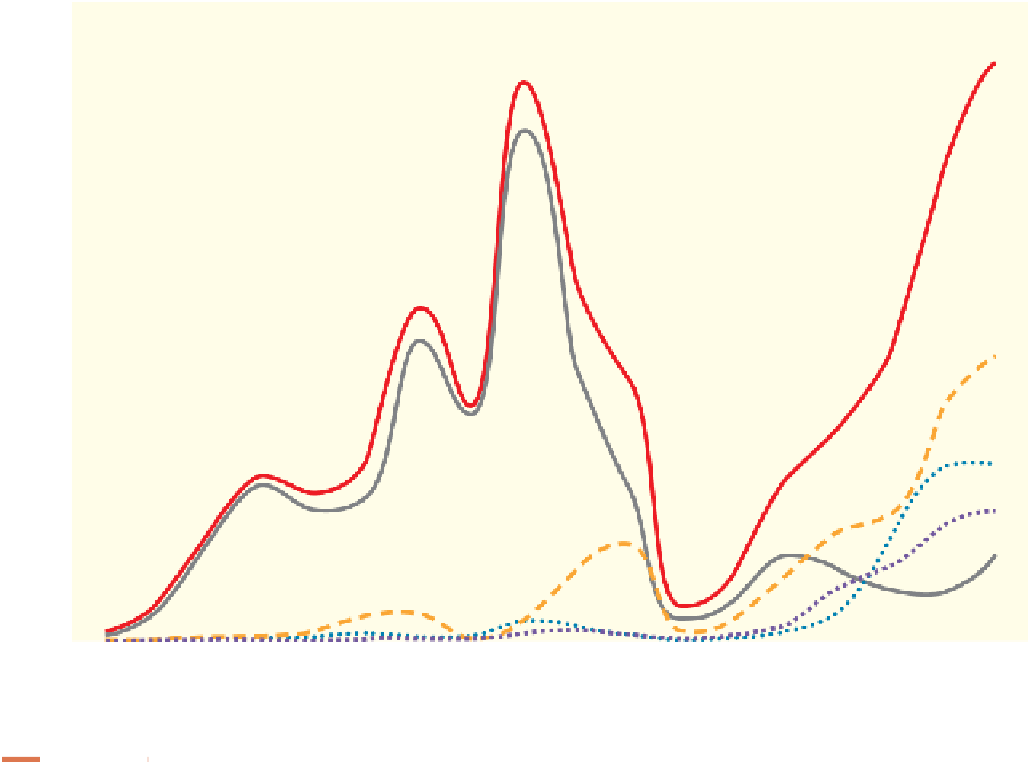Geography Reference
In-Depth Information
10
Total
Europe
Asia
North America
Latin America and the
Caribbean
Africa
Australia and Oceana
8
6
4
2
0
Decade
Figure 3.20
Immigration to the United States by Region, 1820 to 2001
.
Data from
: United States
Census Bureau, 2002.
origins of the U.S. population in 1920. As a result of this
provision, Congress in effect prevented the immigration of
Asians. With these laws in effect and the Great Depression in
full swing, immigration slowed to a trickle during the 1930s.
In some years emigration actually exceeded immigration in
the United States.
After 1940, Congress modifi ed the restrictions on
immigration to the United States. In 1943, Congress gave
China equal status to that of European countries and in
1952 granted Japan a similar status. In 1952, immigration
began to rise again (Fig. 3.20) after Congress passed a new
Immigration and Nationality Act. Congress designed the
act to incorporate all preceding legislation, establishing
quotas for all countries and limiting total immigration
to 160,000. However, far more than 160,000 immigrants
entered the country as refugees, thereby fi lling quotas
for years ahead. Estimates vary, but more than 7 million
immigrants may have entered the United States as refu-
gees between 1945 and 1970.
By 1965, Congress recognized the 1952 act as a fail-
ure and abolished the quota system. Congress set new
limits, which are also refl ected in Figure 3.20. The United
States allowed 170,000 immigrants per year from coun-
tries outside of the Western Hemisphere and 120,000
from countries in the Americas. Refugee policies and
guest worker policies over the last three decades allowed
many more immigrants than these limitations.
The United States and Australia are not the only
countries that have restricted immigration. Many coun-
tries practice
selective immigration
, in which individuals
with certain backgrounds (criminal records, poor health,
subversive activities) are barred from entering.
Other countries have specifi c requirements. For
example, South Africa long demanded “pure” European
descent; New Zealand favored persons of British birth and
parentage; Australia's assisted passage program favored
immigrants from Britain, the Netherlands, Malta, and
Italy; Brazil preferred people with a farming background;
and Singapore courts fi nancially secure persons of Chinese
ancestry. Today South American countries place limits on
the number of immigrants who may cross their borders,
and several countries are instituting quota systems.














































































